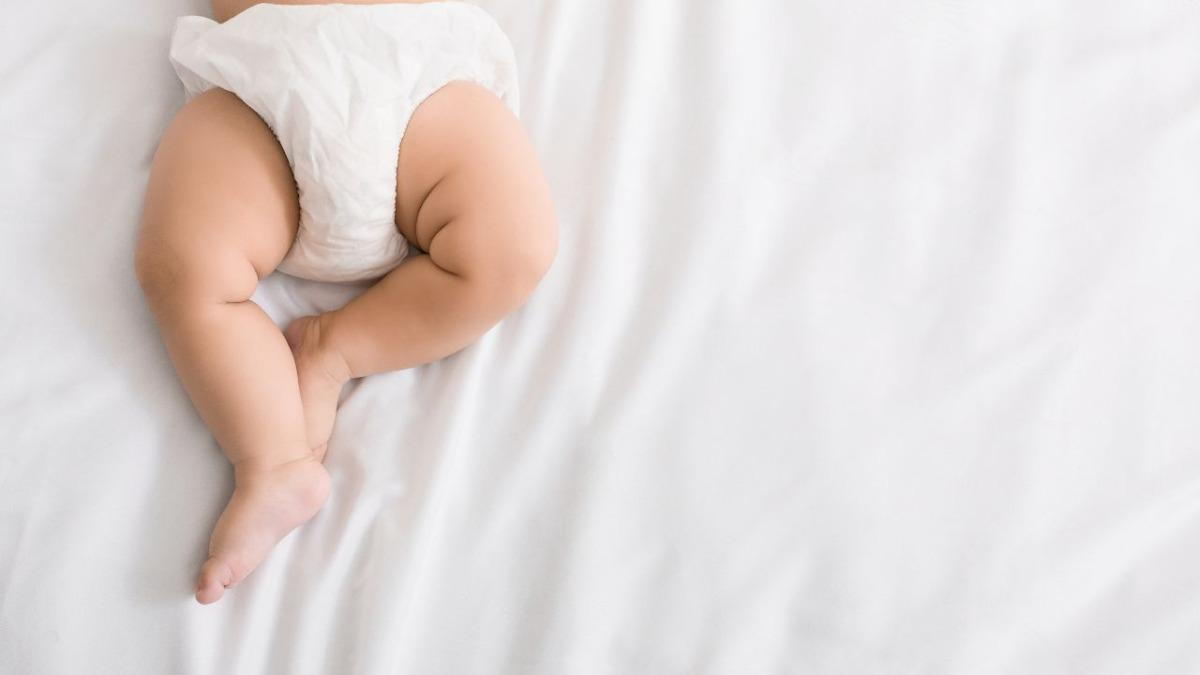
Disposable diapers have come a long way from their humble beginnings. What started as a simple idea of using fabric like terry towel and muslin has evolved into a multi-billion dollar industry. In the early days, cloth diapers were the go-to option for parents. These were often paired with rubber pants to prevent leaks. However, this combination was far from perfect and, yes, diaper rash has become a common concern. The rubber pants caused the rashes, and the ineffective cleaning methods left many babies in soiled diapers for prolonged periods. The challenges of cloth diapering were significant, prompting the need for a better solution.
Over the years, diaper companies have introduced various features like elastic leg cuffs, refastenable tapes, and superabsorbent polymers. However, with these advancements came concerns. Many diapers today contain synthetic fragrances, chlorine bleach, and potentially harmful chemicals, leading to skin reactions and raising questions about long-term safety.
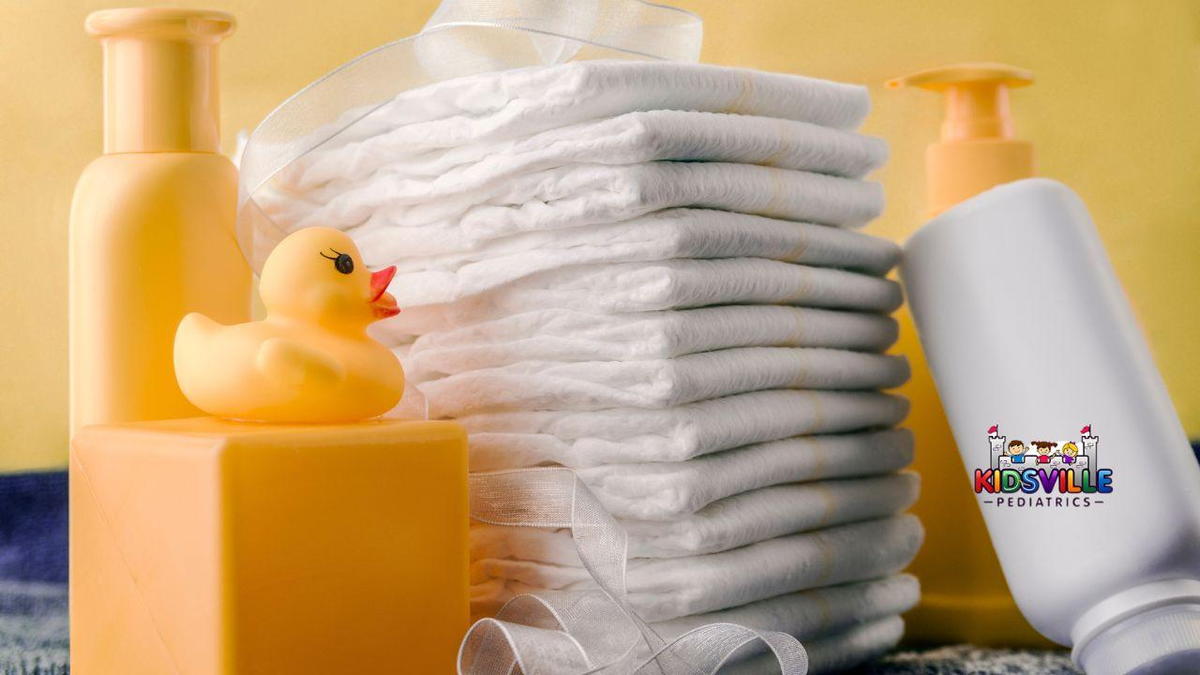
Fortunately, more brands are now focusing on creating diapers that are not only effective but also safe for babies and the planet. Eco-conscious diapers, often free of harmful chemicals, are designed for sensitive skin and use sustainable materials. These options may come at a higher cost, but they offer significant benefits for both your baby and the environment.
Diaper rash is a common concern for parents and caregivers, particularly in babies and toddlers who wear diapers. At Kidsville Pediatrics McKinney, we understand how distressing it can be to see your little one uncomfortable. This guide will provide you with the knowledge and tools needed to prevent, identify, and treat diaper rash effectively.
What Is Diaper Rash?
Diaper rash is a skin condition that appears as redness, irritation, or inflammation on the skin covered by a diaper. It typically occurs on the baby's bottom, genital area, and upper thighs. While most common in infants between 4 and 15 months old, diaper rash can affect babies from birth up to 3 years, and even adults who wear diapers.
Causes of Diaper Rash

Understanding the causes of diaper rash can help you take proactive steps to prevent it. Here are some common causes:
Prolonged Exposure to Moisture: When a wet or soiled diaper is left on for too long, the skin becomes irritated by prolonged contact with urine and feces.
Friction and Chafing: The constant rubbing of the diaper against your baby's delicate skin can cause irritation and lead to a rash.
Yeast Infections: Diaper rash can result from an overgrowth of yeast, a fungus that thrives in warm, moist environments like a diaper.
Bacterial Infections: Bacteria, such as staph or strep, can cause diaper rash if they infect irritated skin.
Allergic Reactions: Some babies may be sensitive to ingredients in diapers, wipes, soaps, or detergents, which can trigger a rash.
Identifying Diaper Rash vs. Yeast Infection

It's important to distinguish between a typical diaper rash and one caused by a yeast infection.
Diaper Rash: Typically appears as large, red patches on the baby's bottom. It responds well to over-the-counter diaper creams.
Yeast Infection: Often presents as small, red spots in the skin folds around the groin, legs, and genitals. Yeast infections require antifungal creams prescribed by a McKinney doctor and can take a few weeks to clear.
How Long Does Diaper Rash Last?
With proper treatment, most diaper rashes should improve within three days. If the rash persists or worsens, it could be a sign of a yeast or bacterial infection, and you should consult your pediatrician at Kidsville Pediatrics McKinney for further advice.
Diaper Rash Symptoms
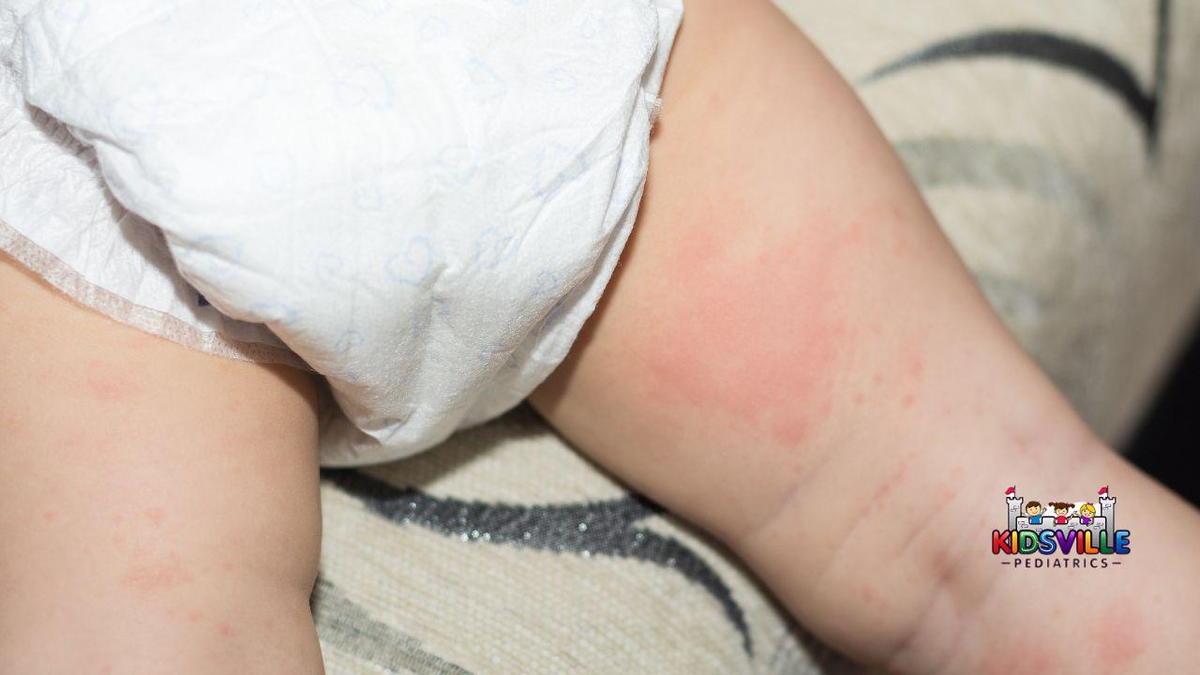
Recognizing diaper rash symptoms early can help you treat diaper rash before it becomes severe. Common symptoms include:
Red, Irritated Skin: Redness and inflammation in the diaper area, especially on the buttocks and genitals.
Discoloration in Darker Skin: In babies with darker skin, the affected areas may appear lighter than the surrounding skin.
Itching and Discomfort: Your baby may be fussy or cry more than usual during diaper changes due to discomfort.
Bleeding or Crusty Sores: Severe cases may result in bleeding or crusty sores, which require immediate medical attention.
Different Types of Diaper Rash

Diaper rash can manifest in several forms, each requiring a slightly different approach to treatment:
Irritant Dermatitis: The most common type, caused by prolonged exposure to urine and feces. It appears as pink or red patches on the areas covered by the diaper but not in the skin folds.
Yeast Diaper Rash: Caused by a fungal infection, it presents as red or pink patches with sharp edges and may include tiny bumps in skin folds. In the most serious cases, the skin may even crack, bleed, or both.
Bacterial Diaper Rash: Known as impetigo, this rash is caused by staph or strep bacteria. It shows up as bright red skin around the anus or crusty yellow pimples in the diaper area.
Allergic Diaper Rash: Although rare, it can occur due to allergens in soaps, detergents, wipes, or diapers. The rash appears wherever the allergen comes in contact with the skin.
Diaper Rash Treatment
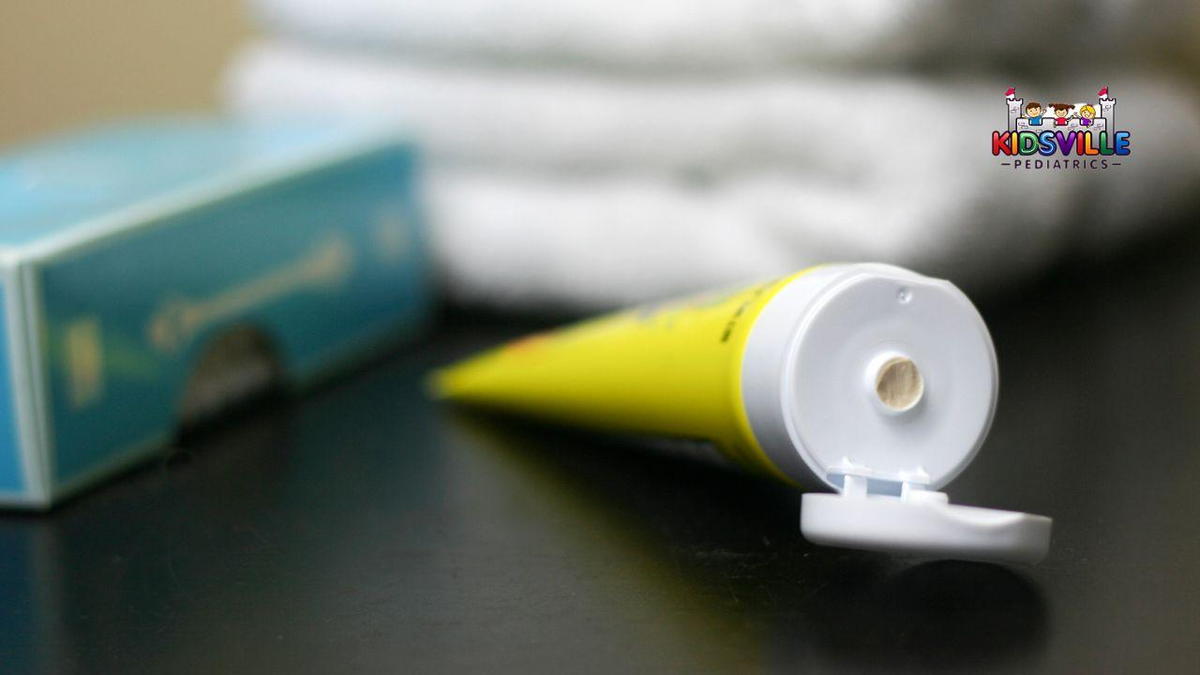
The first and most crucial step in treating diaper rash is to keep your baby's skin clean and dry. Follow these steps to care for the rash effectively:
Clean the Diaper Area Gently: Rinse with warm water and pat dry. If the rash is severe, use a squirt bottle to wash the area without rubbing.
Use Diaper Creams or Ointments: Apply a thick layer of diaper cream, preferably one containing zinc oxide, which forms a protective barrier on the skin.
Air-Dry the Area: Whenever possible, let your baby's bottom air-dry before putting on a new diaper. Avoid using talcum powder as it can be harmful if inhaled.
Choosing the Right Diaper Rash Products
Understanding the differences between creams and ointments can help you choose the best product for your baby's needs:
Diaper Creams: Typically contain less oil and spread easily, forming a barrier against moisture. Zinc oxide is a common ingredient that helps protect and heal the skin.
Diaper Ointments: Heavier and oilier, ointments offer a stronger barrier against irritants but may not allow air to flow as freely to the skin.
Avoid using over-the-counter steroid creams unless directed by your McKinney pediatrician, as improper use can worsen the rash.
Home Remedies for Diaper Rash: What Works and What Doesn't
Many parents turn to home remedies for diaper rash, but not all are effective or safe. Here’s what you need to know:
Breast Milk: Applying breast milk to the rash is safe and may be as effective as mild hydrocortisone ointment.
Cornstarch: Avoid using cornstarch, as it can trap moisture and worsen the rash.
Coconut Oil: While it’s a gentle moisturizer, coconut oil may not be sufficient to clear up a severe rash.
Witch Hazel: An ointment made with witch hazel may help, but never apply distilled witch hazel directly to the skin as it can cause irritation.
Baking Soda Bath: A 10-minute soak in warm water with 2 tablespoons of baking soda can soothe raw skin, but avoid using baking soda directly on the rash.
Diaper Rash Complications
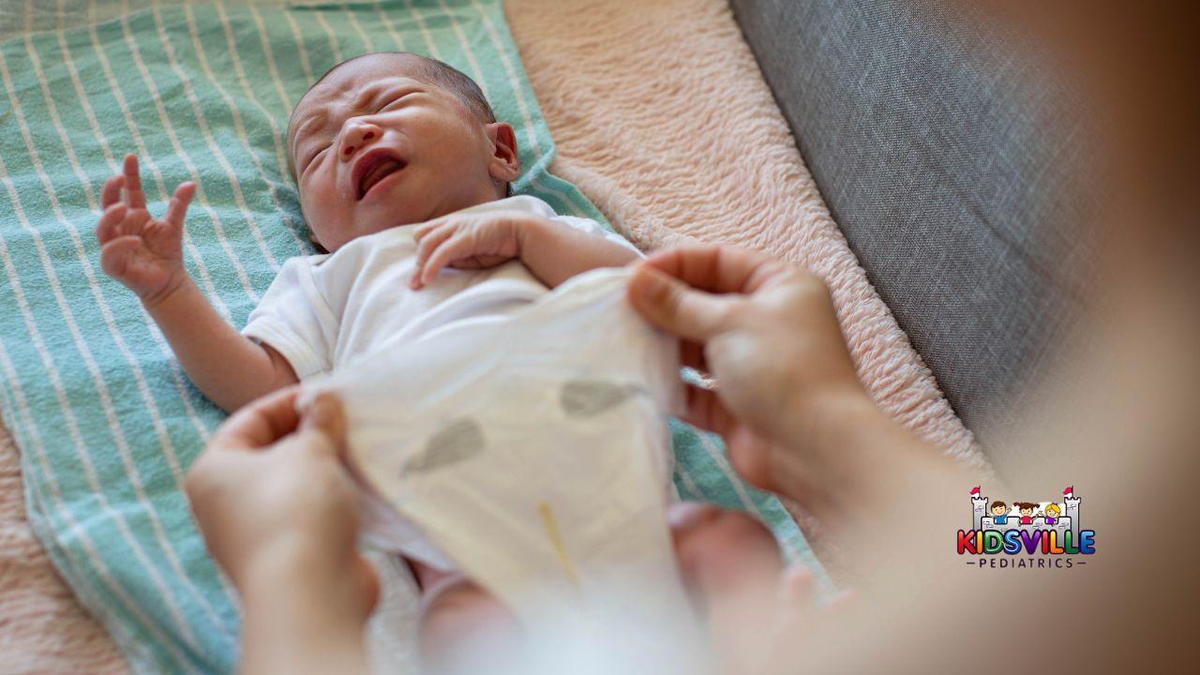
While diaper rash is usually mild, it can sometimes lead to complications:
Skin Discoloration: In babies with darker skin, the affected area may appear lighter for weeks or months after the rash has cleared.
Infection: If the rash becomes infected, it may not respond to typical treatments and could require antibiotics.
Diaper Rash Prevention
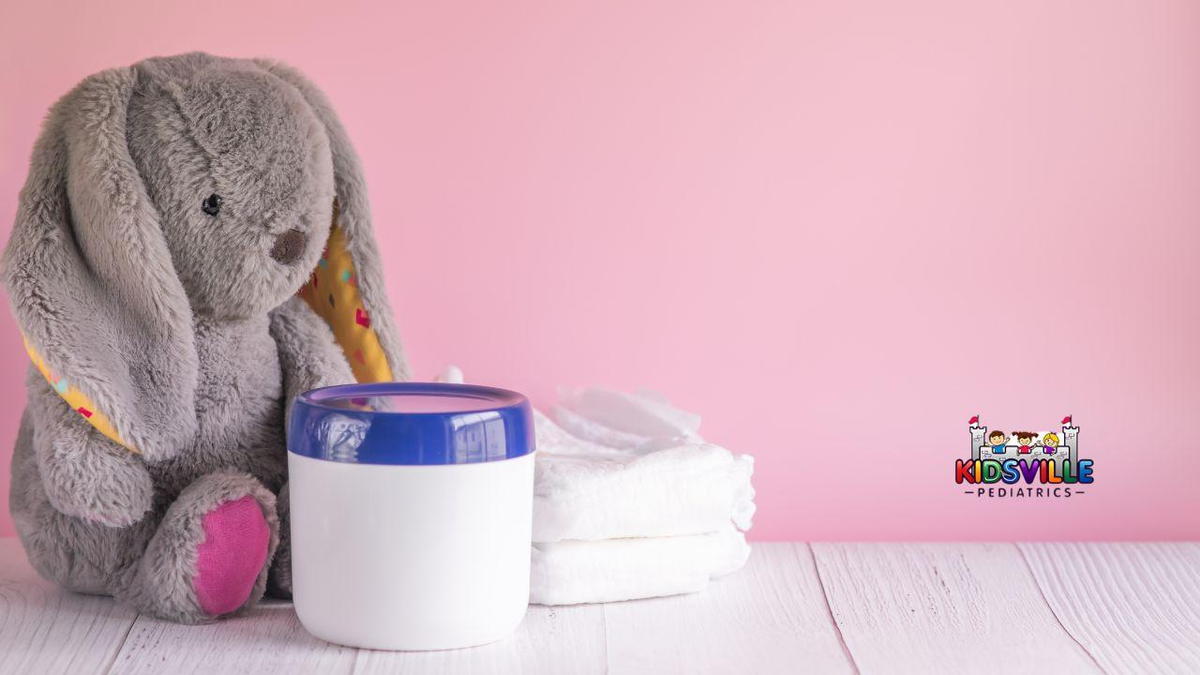
Prevention is always better than cure. Here are some guidelines on how you can prevent the occurrence of diaper rash:
Frequent Diaper Changes: Check and change your baby's diaper as soon as it becomes wet or soiled.
Use Mild Products: Clean the diaper area with plain water and mild cleansers. Avoid wipes with fragrances or alcohol.
Ensure the Area Is Dry: Pat the area dry before putting on a new diaper.
Apply Barrier Creams: Use a diaper cream or ointment with each diaper change if your baby is prone to rashes.
Allow Airflow: Make sure diapers aren’t too tight and let your baby go diaper-free when possible.
Pediatrician Near Me: Diaper Rash Urgent Care
While most diaper rashes can be treated at home, some situations require professional care. Contact your pediatrician at Kidsville Pediatrics McKinney if:
The rash worsens or doesn’t improve after 2-3 days of treatment.
Your baby has a fever or appears sluggish.
You notice yellow, fluid-filled bumps or crusty areas, indicating a possible bacterial infection.
The rash shows symptoms of a yeast infection, such as a swollen rash with white scales or redness in skin folds.
At Kidsville Pediatrics McKinney, we’re here to support you through every stage of your child’s development. Diaper rash is a common challenge, but with the right care and attention, your baby’s skin will stay healthy and comfortable. Keep in mind, if you have any questions or concerns, don’t hesitate to reach us. We’re always here to help!
You may schedule an appointment online: https://www.kidsvillepeds.com/appointment/ Or visit/call our clinics: Kidsville Pediatrics Mansfield TX: 682-341-3910; 1759 Broad Park Circle S, Suite 201 & 205, Mansfield, TX Kidsville Pediatrics Southlake: 682-345-8010; 2813 W. Southlake Blvd Suite 100 Southlake, TX Kidsville Pediatrics McKinney: 469-885-9400; 5881 Virginia Pkwy. Suite 300 Mckinney, TX |
